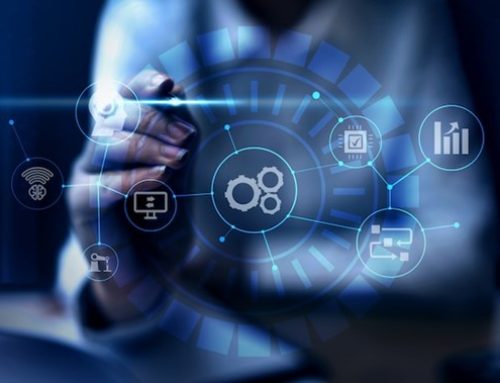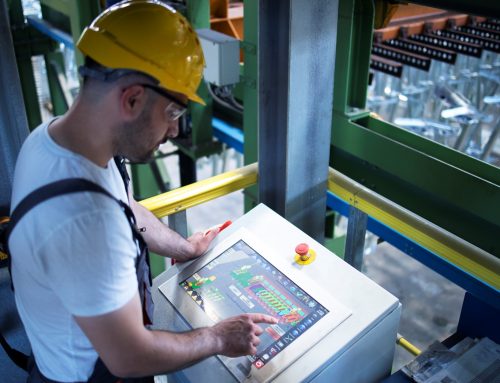Discover what smart glasses are, how they function, and how they can enhance the productivity of industrial maintenance teams.
Have you ever imagined wearing a pair of glasses that could communicate with machines, provide real-time information, and make your work easier? That’s the idea behind smart glasses, a technology poised to revolutionize the industrial sector and boost the productivity of maintenance teams.
In this article, you’ll learn about what smart glasses are, their key functionalities, and how they can help workers perform tasks more efficiently and safely. Curious to know more? Keep reading and find out!
Smart Glasses — Uncover the Possibilities
Smart glasses are electronic devices that combine advanced technologies such as Artificial Intelligence, Augmented Reality, and the Internet of Things. They function as a portable control panel, allowing users to interact with machines, view reports and alerts, access manuals and tutorials, and more.
With smart glasses, workers can obtain continuous information about equipment operations, identify potential faults, and execute repairs with greater speed and precision. Additionally, smart glasses can also enhance communication among team members, enabling real-time data and image sharing.
There are several models of smart glasses available in the market, each with its own features and specifications. Some examples include:
● Google Glass: A pioneer in the field, Google Glass connects to the user’s smartphone and displays information on the right lens. It features an integrated camera, microphone, speaker, and touch sensor. Users can control the device through voice commands or gestures.
● Microsoft HoloLens: HoloLens employs mixed reality, a technology that combines virtual and real elements. It incorporates a transparent display projecting holographic images into the user’s field of view. It also has motion sensors, cameras, microphones, and speakers. Users can interact with the device using gestures, voice commands, or touch.
● Vuzix Blade: Vuzix Blade utilizes augmented reality, which overlays digital information onto the real world. It features a color display showing images on the right lens. It also includes a camera, microphone, speaker, and touch sensor. Users can control the device through gestures, voice commands, or touch.
These are just a few examples of smart glasses that are already available or in development. Apple is also set to revolutionize the market with its Vision Pro, a brand model expected to launch in the coming months. However, one thing is certain: they are here to stay and become an essential tool for workers in the near future.
Boosting Productivity for Industrial Maintenance Teams
Smart glasses can bring numerous benefits to industrial maintenance teams, enhancing both quality and productivity. Here are some examples:
● Enhanced safety: Workers can receive guidance and alerts about workplace risks and safety procedures, reducing the likelihood of accidents or equipment damage.
● Improved training: Accessing educational content and interactive training on machinery and tasks can enhance knowledge and skills.
● Communication optimization: Easy communication between colleagues and superiors, sharing real-time information and images, facilitates collaboration and decision-making.
These benefits can translate into a significant increase in the productivity of maintenance teams, yielding better results for companies and greater satisfaction for workers. Notably, according to Fortune Magazine, technology is the third choice for workers when asked about what can help reduce stress and improve efficiency, right after better salaries and paid time off.
Smart glasses are an innovative technology that can transform how workers interact with machinery and perform their tasks. They offer a range of functionalities that can enhance the quality, safety, and productivity of industrial maintenance teams.
If you’re interested in learning more about how technology can benefit your business, request a demo of Manusis4 and discover the advantages of asset management software.






Leave A Comment